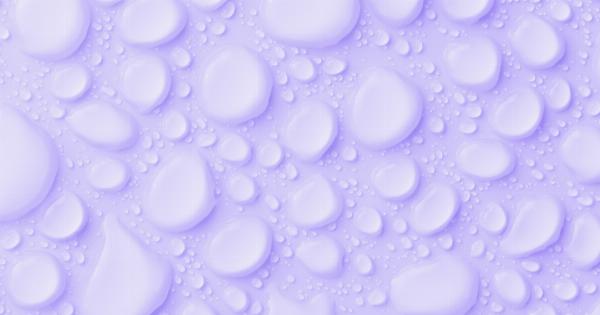Weight gain and fluid retention are two common conditions that many people struggle with. It can be confusing to determine whether the extra pounds on the scale are due to actual weight gain or temporary fluid buildup.
Understanding the difference between these two conditions is important for appropriate diagnosis and treatment. In this article, we will explore the causes, symptoms, and treatments for weight gain and fluid retention, as well as how to differentiate between the two.
What is Weight Gain?
Weight gain refers to an increase in body weight, which can occur over a period of time due to various factors. It is often a result of consuming more calories than the body needs, leading to an excess of stored energy in the form of fat.
Sedentary lifestyle, poor diet, hormonal imbalances, or certain medical conditions can contribute to weight gain.
Causes of Weight Gain
There are several common causes of weight gain, including:.
- Overeating: Consuming more calories than the body requires can lead to weight gain.
- Unhealthy Diet: A diet high in processed foods, sugars, and unhealthy fats can contribute to weight gain.
- Sedentary Lifestyle: Lack of physical activity and prolonged periods of sitting can promote weight gain.
- Hormonal Imbalances: Imbalances in hormones like insulin, leptin, and thyroid hormones can impact body weight.
- Genetics: Some people may be genetically predisposed to weight gain and have a slower metabolism.
- Medications: Certain medications, such as antidepressants, antipsychotics, and corticosteroids, can cause weight gain as a side effect.
Symptoms of Weight Gain
Common symptoms associated with weight gain include:.
- Increase in body weight
- Tight-fitting clothes
- Visible increase in body fat
- Decreased energy levels
- Difficulty in performing physical activities
- Feeling self-conscious or unhappy with body image
Treatment for Weight Gain
To effectively manage weight gain, it is important to address the underlying causes. Here are some strategies that can aid in weight loss:.
- Healthy Diet: Adopting a balanced diet that consists of fruits, vegetables, lean proteins, and whole grains.
- Regular Exercise: Engaging in regular physical activity, such as cardio exercises, strength training, and yoga.
- Portion Control: Monitoring portion sizes and practicing mindful eating.
- Stress Management: Managing stress levels through techniques like meditation, deep breathing exercises, and relaxation techniques.
- Medical Intervention: In some cases, medical intervention such as medication or surgery may be necessary, especially if weight gain is causing significant health issues.
What is Fluid Retention?
Fluid retention, also known as edema, is a condition characterized by the abnormal buildup of fluid in the body’s tissues. It can occur in various parts of the body, such as the legs, feet, hands, and abdomen.
Edema is often the result of an imbalance in the body’s fluid regulation mechanisms, leading to excessive fluid accumulation.
Causes of Fluid Retention
Fluid retention can have several causes, including:.
- Prolonged Sitting or Standing: Sitting or standing for extended periods can lead to fluid accumulation in the legs and feet.
- High Salt Intake: Consuming excess salt can cause the body to retain water, leading to edema.
- Hormonal Changes: Hormonal fluctuations during the menstrual cycle or pregnancy can cause temporary fluid retention.
- Inflammation: Inflammatory conditions, such as arthritis or allergies, can contribute to fluid retention.
- Underlying Medical Conditions: Certain medical conditions like heart or kidney disease, liver cirrhosis, or thyroid disorders can cause edema.
- Medication Side Effects: Some medications, such as corticosteroids, nonsteroidal anti-inflammatory drugs (NSAIDs), or blood pressure medications, can lead to fluid retention.
Symptoms of Fluid Retention
Common symptoms associated with fluid retention include:.
- Swollen body parts, particularly in the legs, feet, ankles, and hands
- Stiff or swollen joints
- Puffiness or bloating
- Weight fluctuations over a short period
- Indentation marks on the skin
- Generalized discomfort or pain
Treatment for Fluid Retention
Treatment for fluid retention depends on the underlying cause and severity of the condition. Here are some approaches commonly used:.
- Reducing Sodium Intake: Limiting sodium consumption can help reduce fluid retention.
- Physical Activity: Regular exercise can help improve circulation and reduce fluid buildup in the extremities.
- Elevating Legs: Elevating the legs above heart level can facilitate fluid drainage and alleviate edema in the lower limbs.
- Compression Garments: Wearing compression stockings or garments can help prevent fluid from accumulating in the legs.
- Diuretics: In cases where fluid retention is severe, diuretic medications may be prescribed to increase urine output and reduce edema.
Differentiating Between Weight Gain and Fluid Retention
While weight gain and fluid retention can share some symptoms, there are ways to differentiate between the two:.
- Location: Fluid retention typically occurs in specific areas of the body, such as the legs, feet, and hands, while weight gain is generally distributed throughout the body.
- Timeframe: Weight gain often occurs gradually over a longer period, while fluid retention can lead to sudden weight fluctuations in a short period.
- Associated Symptoms: Weight gain is often associated with increased body fat, decreased energy levels, and difficulty in physical activities, while fluid retention may cause localized swelling and discomfort.
- Response to Treatment: Addressing the underlying causes of weight gain with diet and exercise can lead to sustainable weight loss, while management of fluid retention may involve methods to reduce water retention and improve circulation.
Conclusion
Distinguishing between weight gain and fluid retention is important for accurate diagnosis and appropriate management.
While weight gain is often a result of consuming excess calories and fat accumulation over time, fluid retention is characterized by the abnormal buildup of fluid in the body’s tissues. Understanding the causes, symptoms, and treatment options for both conditions can help individuals take appropriate steps towards achieving their desired health goals.






























